The Secret To Better Ball-Striking
This could change your game forever!
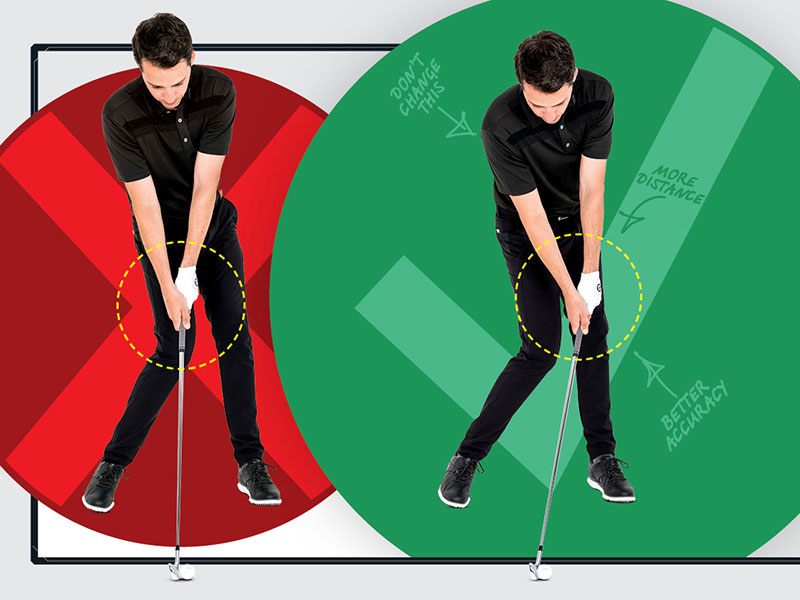

We reveal a simple adjustment that could transform your ball-striking without changing your swing
What’s the secret to better ball-striking? For Jack Nicklaus, it’s simple: “Striking the ball with the hands slightly ahead of the ball is fundamental to solid shot-making.” This is what the world’s best golfers do – they compress the ball, shot after shot, ball first, then divot.
We mere mortals have our moments where we send one arrow straight at the pin – yet we don’t always know how we did it, and we can lack consistency. Well, what if we told you that you could transform your ball-striking without making drastic swing changes?
Golf Monthly Reader Offer: Golf Monthly readers can get 15% discount at dstgolf.com when they use the promo code GM15 at checkout
This ‘hands forward’ concept is an established truth. There are many ways to swing a golf club effectively. We all know someone with an unorthodox action.
There are plenty of swings in the professional game, too, which you’d struggle to find in a coaching manual. For all the differences and little quirks out there, however, the best ball-strikers share at least one characteristic: the hands are ahead of the ball through the hitting zone.
If you can achieve this position, you’ll reap the rewards. Biomechanics expert Dr Sasho MacKenzie, who has worked with many of golf’s leading manufacturers, has shown that this ‘lag impact’ can greatly improve clubface angle, dynamic loft and club path. What does this mean?
Put simply, greater accuracy, greater distance and greater distance control – something every golfer strives for.
Despite these much-publicised benefits, the game is littered with ‘flippers’. The flipper – and there’s a fair chance you’re one of them – is a player who tends to collapse their hands at impact.
In slow motion, you’d see the shaft overtaking an extension of the lead forearm through impact, which will often lead to those confidence-sapping heavy contacts, and shots that lack penetration and distance. Surprisingly, it’s not a fault that just exists among amateurs.
For Bertie Cordle, a former tour pro and the man who commissioned the MacKenzie study, flipping is “the biggest problem in golf”.
His own research supports this: of 448 golfers (112 professionals and 336 amateurs), he found that as many as 51% of professionals and 84% of amateurs reached a flip impact.
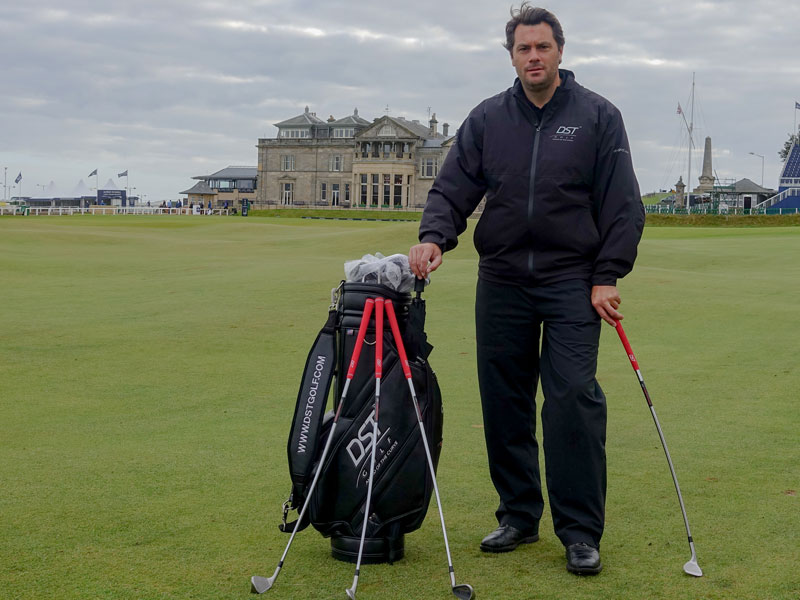
There’s a reason why Cordle has devoted so much time to studying this area of the game. Years ago, he struck a very good ball and was a regular on the Challenge Tour.
Sadly, he was forced to give up, and when he started playing again ten years later, he struggled. As frustrating as it was, he became fascinated by ball-striking. Where was the consistency? It’s a question many of us have probably asked at some time or another.
Golf Monthly Reader Offer: Golf Monthly readers can get 15% discount at dstgolf.com when they use the promo code GM15 at checkout
Cordle wasn’t willing to just put this down to rust. He studied four of the game’s best ever ball-strikers in great depth – Lee Trevino, Moe Norman, George Knudson and Ben Hogan, who, incidentally, all had very different actions – and he read The Golfing Machine by Homer Kelley and Ben Hogan’s Five Lessons: The Modern Fundamentals of Golf. It led to something of a light-bulb moment.
“On the title page there was a drawing by a guy called Anthony Ravielli, showing Ben Hogan coming into impact,” he explains. “To demonstrate the club was moving at speed, he drew lots and lots of lines. I thought, if you join up the handle with the first line of where the clubhead is, you’d get a curved shaft.
“I remember thinking this was just a physics problem. It’s all about trying to maintain control of the club until after the ball has been struck. I thought that if I could physically force golfers to understand, feel and be reminded of where the club handle needs to be when they strike the golf ball, then they’ll at least be able to build a swing around delivering the handle into that position.”
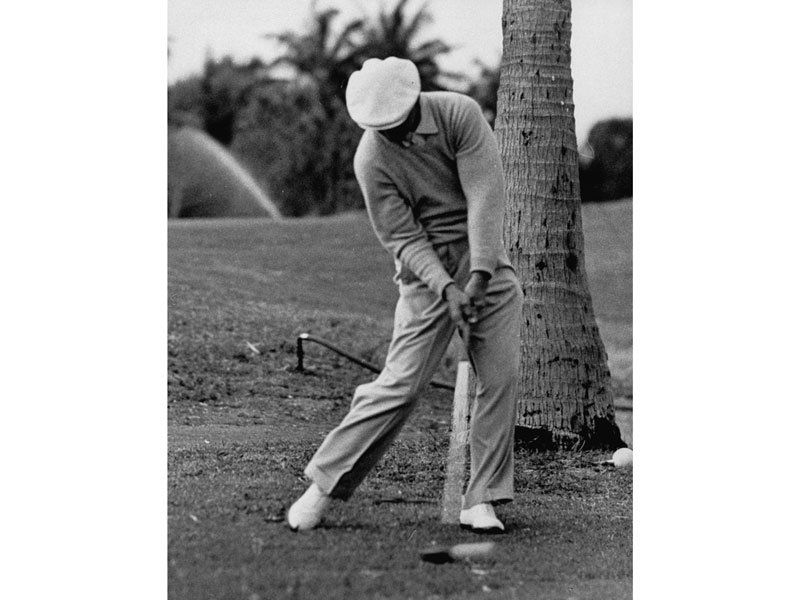
In 2015, Cordle launched the DST (Delayed Strike Technology) Compressor, a training club featuring a scientifically curved shaft to replicate the shape of a normal shaft under its maximum load during impact.
Think of those lessons you’ve had where your pro starts grabbing your arms and giving you a feel of where you need to be – they’re often the most helpful; it feels like a cheat, a shortcut to quicker results, almost. It’s a similar case with the DST Compressor, where you’re quickly learning to understand where your hands need to be at impact.
Demand for the training club soared. Today, many of the world’s best players – golfers renowned for their ball-striking prowess, such as Justin Rose and Jon Rahm – won’t go to the range without it.
Cordle, though, was keen to incorporate the same technology that went into the Compressor into normal golf clubs. With the DST ‘Impact Line’, this is what he has done – and he’s hopeful this can be the real game-changer for the wider golfing population.
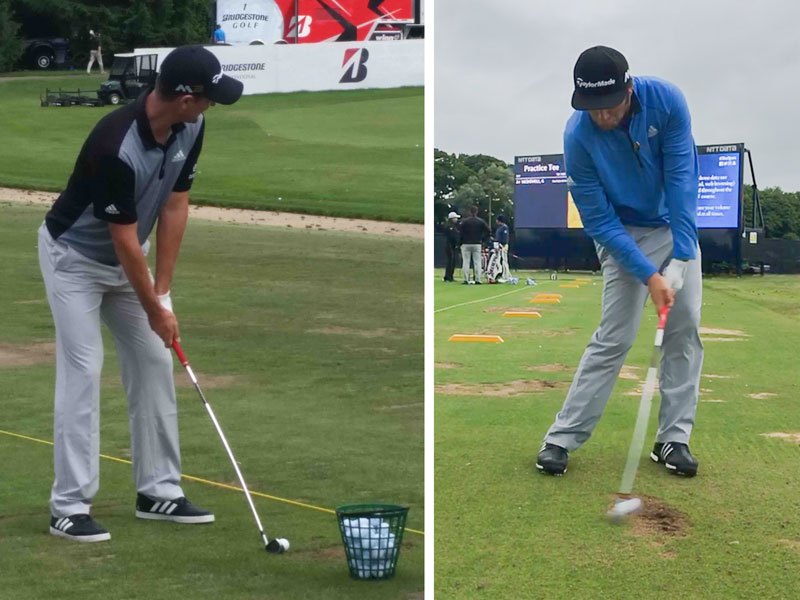
Lines are lasered into the hosel to help golfers improve their handle position at impact with the ball. It enables players to ensure the clubface is square to the target and the handle is in a position where the shaft trails behind an extension of the lead forearm, creating a positive lag angle at impact.
Visual aids on clubs might not be anything new, but this technology is different. Nothing similar exists. It’s no gimmick either – it’s R&A approved, and research proves how effective it can be.
An independent study has examined its effectiveness, revealing reduced hand action at impact and a greater ability to hit down on the ball.
In addition, it concluded that golfers were able to correct their own flaws. Putting right your own faults... now you’re talking.
Dr MacKenzie’s independent study found there was a 43% improvement in accuracy between a flip and a lag impact, a 50% improvement in distance control and a six yard gain in distance.
“We’ve seen so many people improve their rotation and their swing paths, which means more distance and greater accuracy,” says Cordle.
“These things are just a by-product of being aware of where the handle needs to be when they strike a golf ball. There’s no coaching going on. Once you understand where the handle needs to be, you can develop a motion and sync your downswing to reach that handle position at impact.”
“Sadly, reaching the forward handle position that produces a lag impact is more exaggerated than people imagine. When we ask golfers to demonstrate a lag impact they tend to get nowhere close. That’s the reason why the DST Impact Lines being on all the clubs in the bag is so useful, because it allows you to understand, feel and be reminded of the forward handle position that produces a lag impact before every shot you play.”
It costs £899 plus VAT to give your clubs the laser treatment. Granted, this is quite an outlay, but who’s to say it won’t transform your game? Cordle believes DST Impact Line should, and could, eventually be made part of the manufacturing process.
Golf Monthly Reader Offer: Golf Monthly readers can get 15% discount at dstgolf.com when they use the promo code GM15 at checkout
“The Distance Insights Project report could be the beginning of the change,” he says. “Manufacturers might find themselves having to try and focus on different ways to market and sell their clubs.
"Although DST’s Impact Line technology might be a step into the unknown for them, it’s proven to be a massive area of improvement. What is more is that these benefits aren’t derived through material or structural changes to the club but through helping the golfer to use their clubs more effectively."
There have been some major leaps forward in golf club technology in recent years: hotter faces, adjustability, greater forgiveness and easy-to-hit long- irons, but up until now, Cordle says, no one has done anything to explain to the golfer how to get the best out of their clubs.
“It’s all been about ‘the lightest’, ‘the fastest face’ or whatever it might be,” he says. “It could be a new time for golf club manufacturers. A lot of the world’s best players are requesting the DST Impact Line on their own clubs,” says Cordle. Anything that improves performance without any drastic swing changes warrants attention, don’t you think? Watch this space.
Game Changer
Mike Harris on how the DST Compressor and Impact Line technology have helped his game
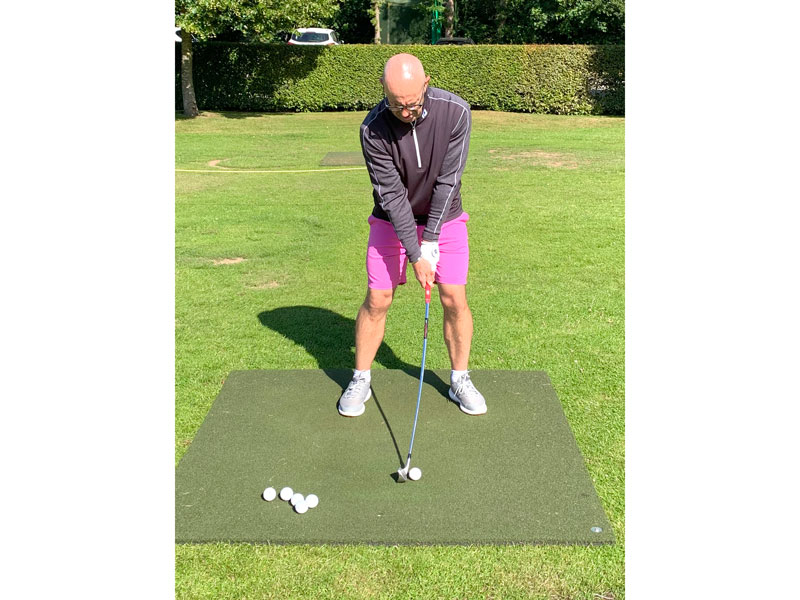
Iron play has always been the weakest part of my game. Even when I was as low as a 6 handicap, ball-striking was my achilles heel. A lack of consistency manifested itself in weak shots that often leaked out to the right and I was hitting far too many tops for a single-figure golfer!
For a long time, my short game got me out of jail and meant I could turn a blind eye to my iron play. When my short game blew up then I really was in trouble and it was no surprise that my handicap got up to 10.
Over the past two years, I’ve been having lessons focusing on iron play and one thing that became apparent to Martin Smith, my PGA pro, was just how neutral, even behind, my hands had become at address. That was causing me to flip at impact, resulting in the poor strikes.
Martin got me using the DST Compressor training aid in lessons to help achieve the feeling of hands forward – at first you can’t believe how far forward your hands should be – and I bought one of my own to practise with, which really helped with strike.
However, adopting the correct hand position on the practice ground using a training club and consistently replicating that on the course with standard clubs is hard.
Golf Monthly Reader Offer: Golf Monthly readers can get 15% discount at dstgolf.com when they use the promo code GM15 at checkout
Having the impact lines lasered on to my irons and wedges at the start of the season has allowed me to always have a visual reminder on every shot, and the results have been incredible.
I’ve become a much more consistent ball-striker – I am hitting my irons further, straighter and on a stronger flight. My short game is even undergoing a bit of a renaissance too!
Get the Golf Monthly Newsletter
Subscribe to the Golf Monthly newsletter to stay up to date with all the latest tour news, equipment news, reviews, head-to-heads and buyer’s guides from our team of experienced experts.
David joined Golf Monthly in 2015 as a content editor for the magazine and regularly contributes to the website. He has worked in magazine publishing and editing since 2003. He is a keen golfer and up until recently was a member of Blackmoor Golf Club in Hampshire. He has covered various big events and tournaments for GM, the highlight of which was witnessing Tiger Woods win his 15th Major at Augusta in 2019. Email: david.taylor@futurenet.com
-
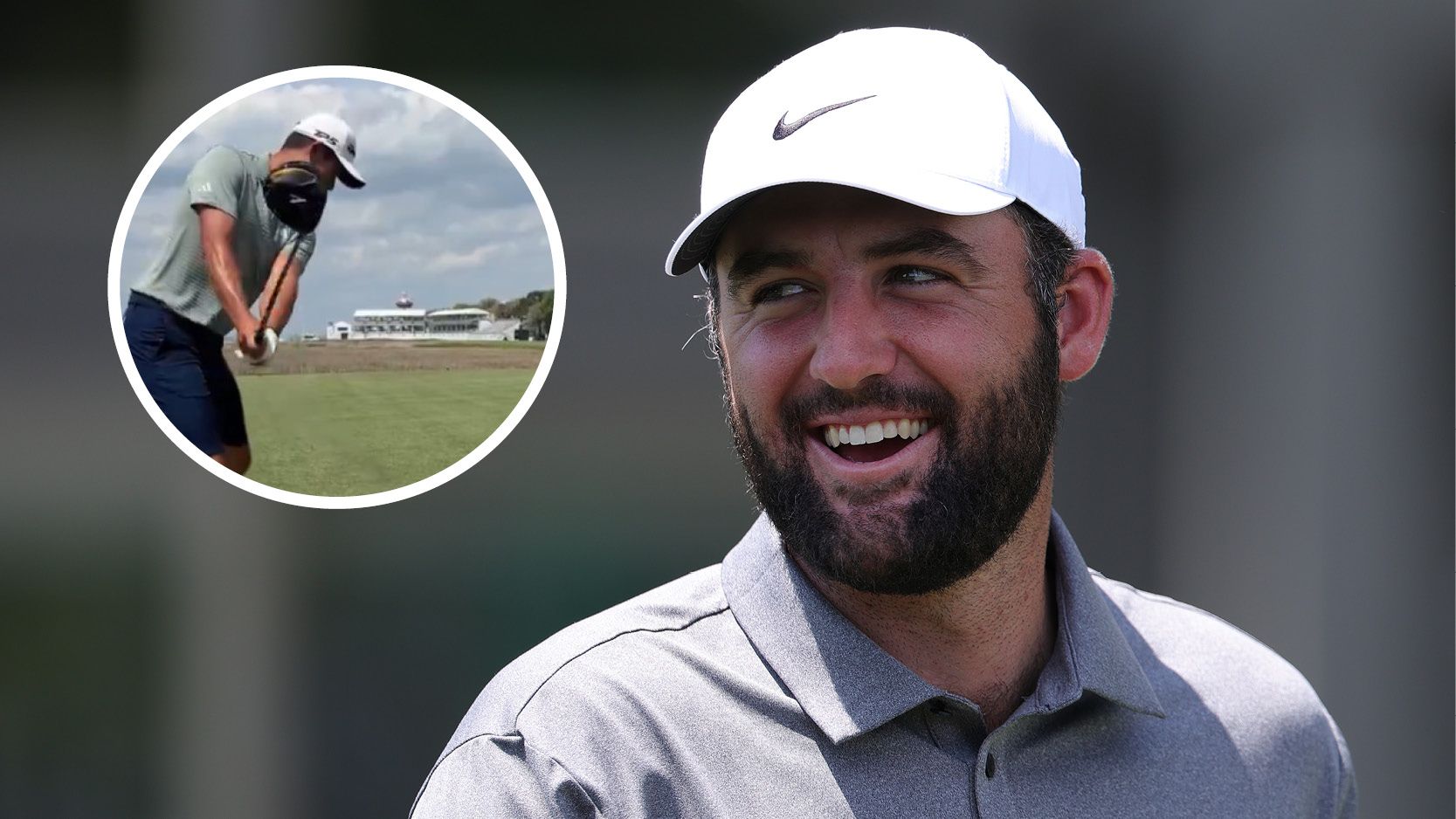 Scottie Scheffler Among Big Names Spotted Testing TaylorMade R7 Quad Mini Driver At RBC Heritage
Scottie Scheffler Among Big Names Spotted Testing TaylorMade R7 Quad Mini Driver At RBC HeritageVarious TaylorMade staffers, like Scheffler and Fleetwood, were seen testing the R7 Quad Mini Driver at Harbour Town Golf Links prior to the main event on Thursday
By Matt Cradock
-
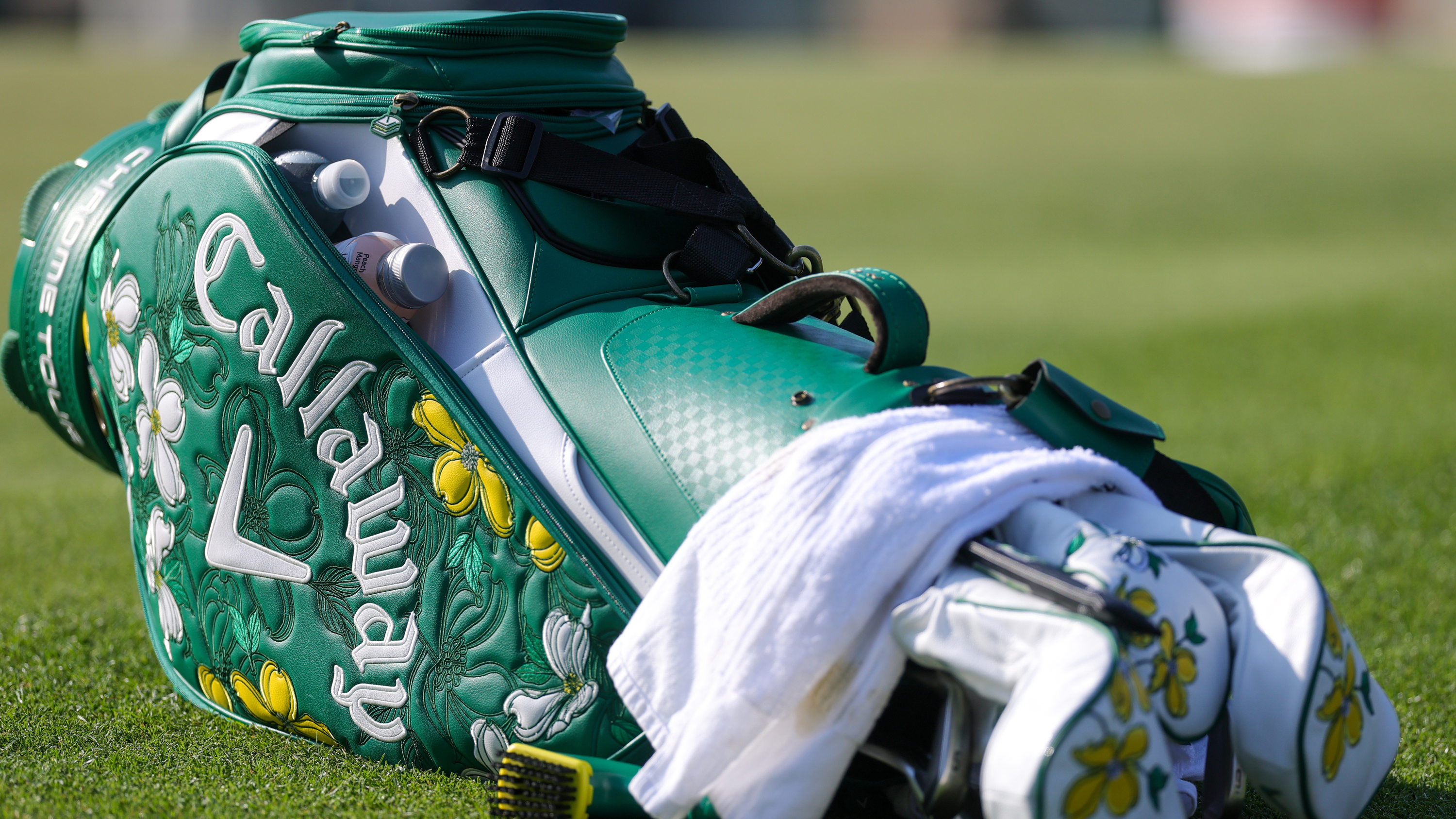 Building The Ultimate Callaway Golf Bag: Our Favourite Clubs From The Brand’s History
Building The Ultimate Callaway Golf Bag: Our Favourite Clubs From The Brand’s HistoryWe select the best and most legendary gear that Callaway has ever produced, from driver right through to putter...
By Fergus Bisset
-
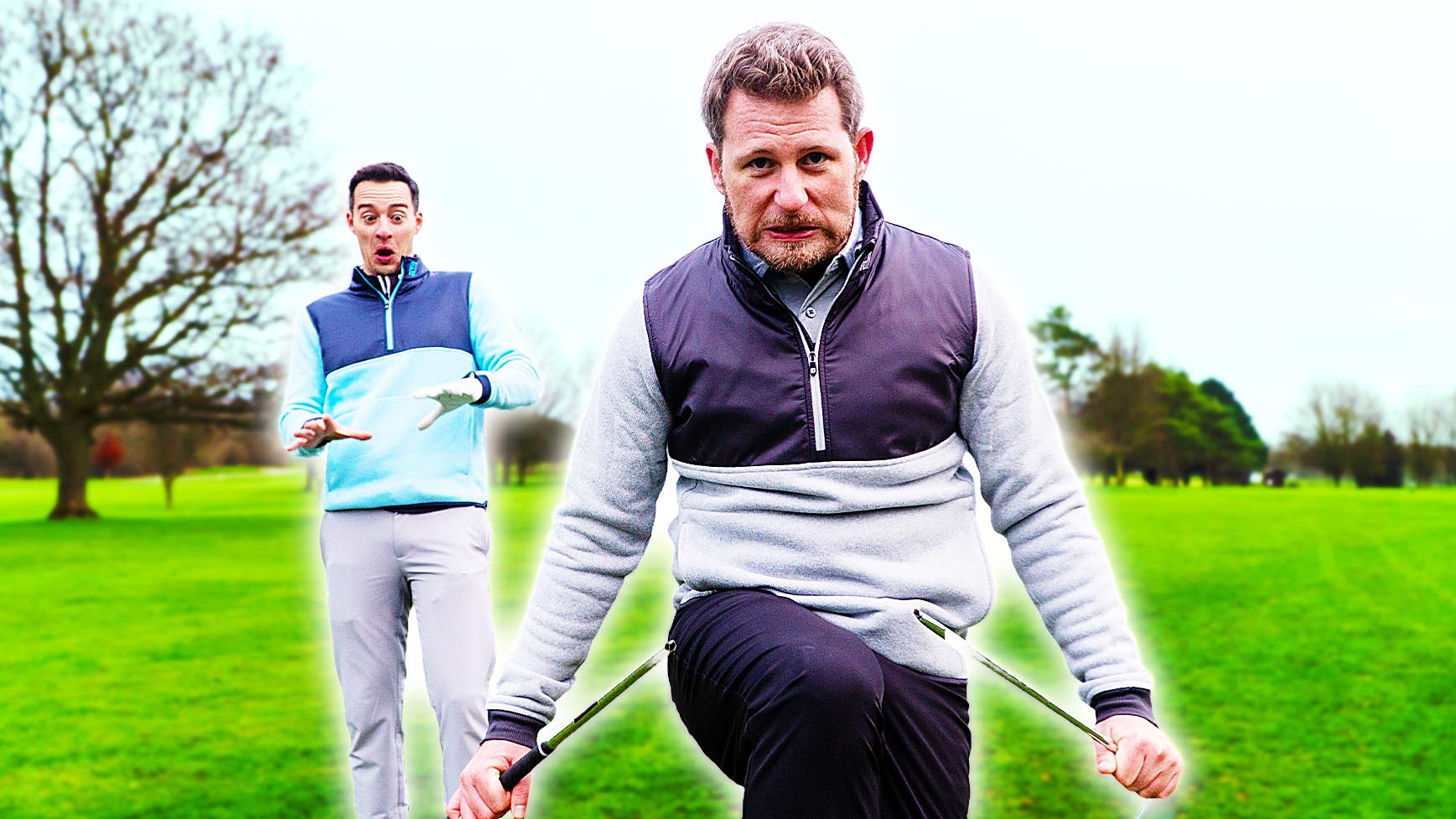 7 Most Annoying Golf Playing Partners
7 Most Annoying Golf Playing PartnersWe showcase the seven most annoying playing partners that golfers can have the misfortune of teeing it up with!
By Sam Tremlett
-
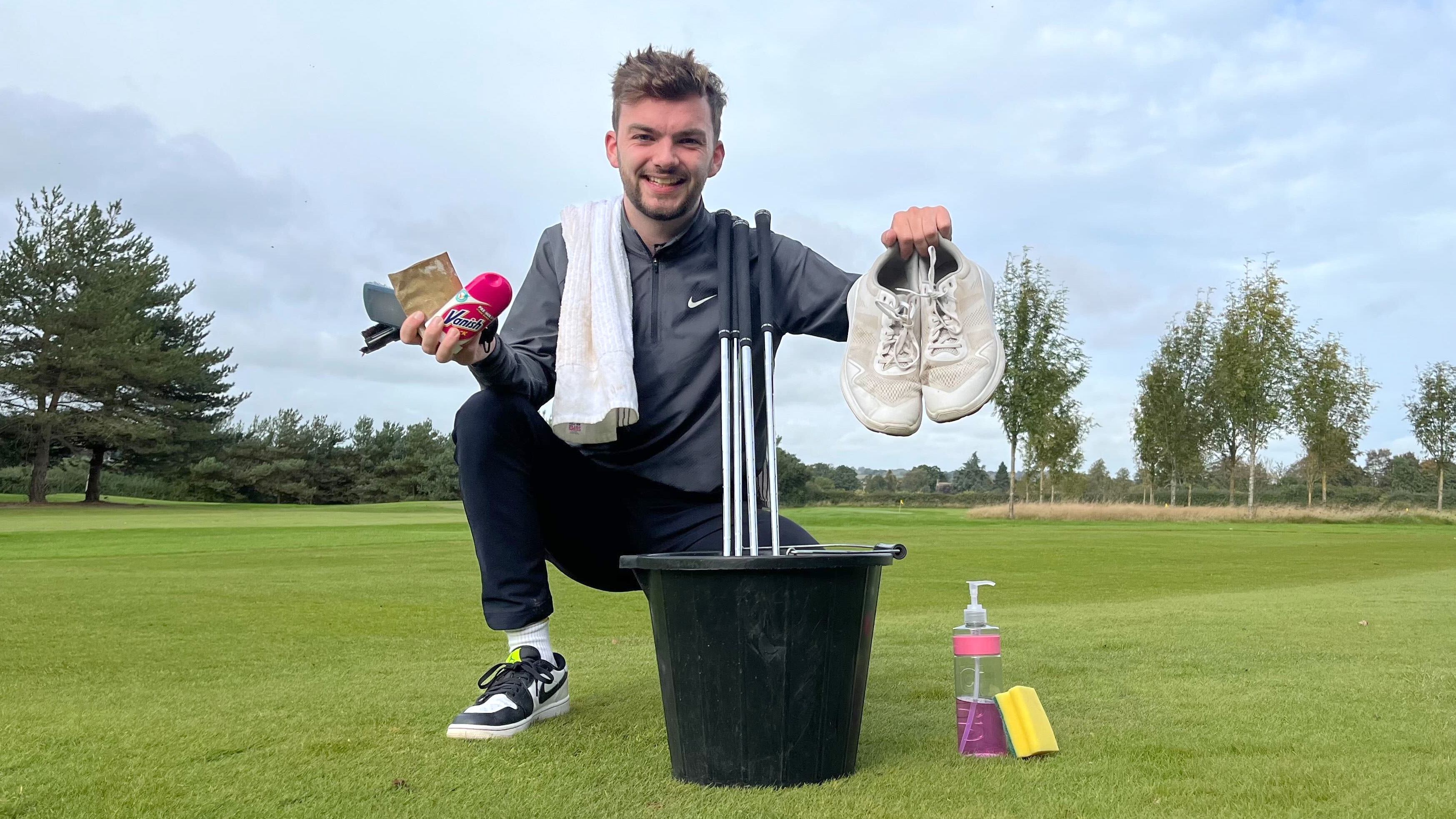 How To Clean Golf Clubs And Grips
How To Clean Golf Clubs And GripsIf you want to know how to clean golf clubs and grips, check out this step-by-step guide
By Sam Tremlett
-
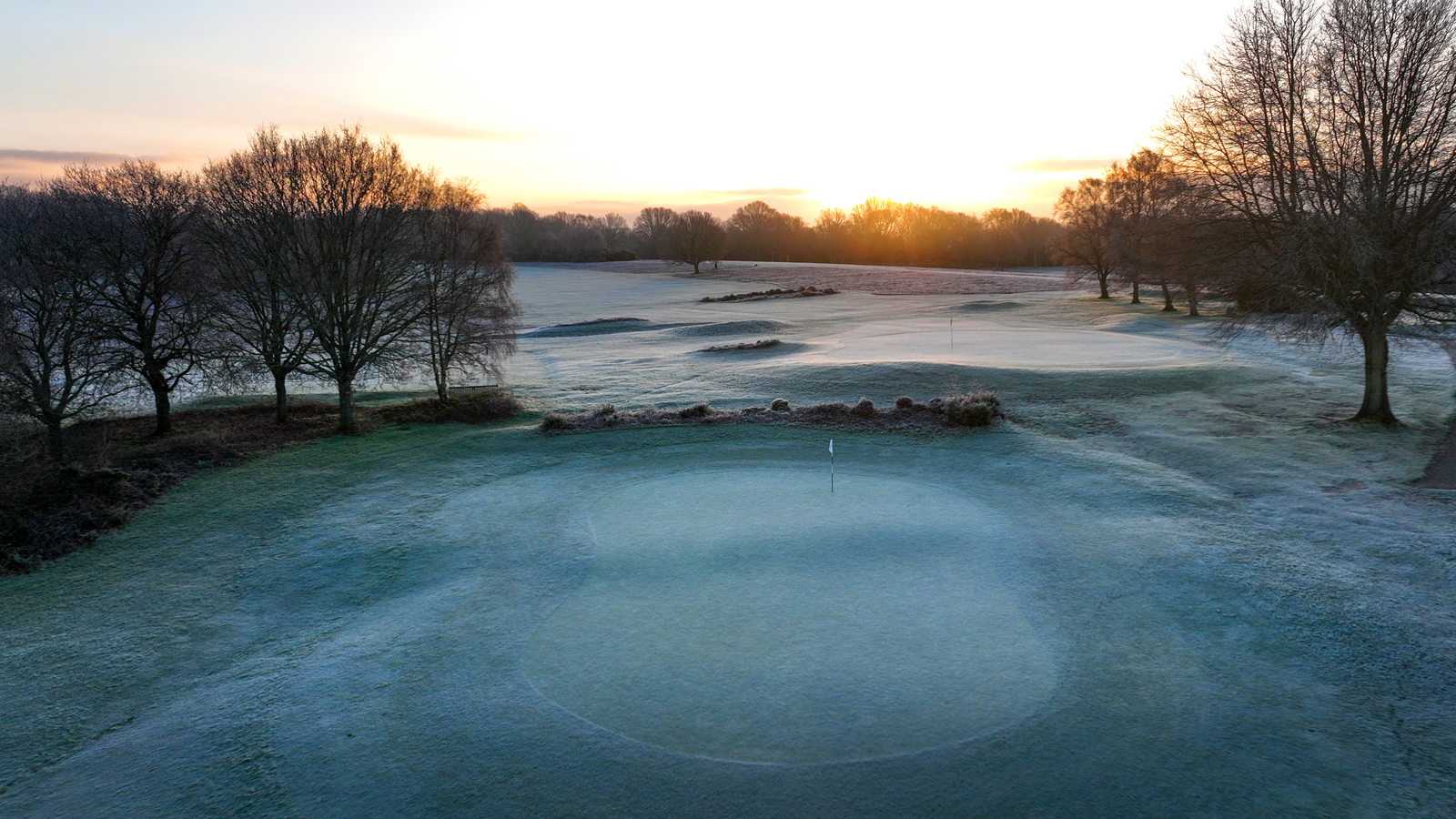 In Praise Of Golfing In Winter
In Praise Of Golfing In WinterFergus Bisset on why he enjoys playing golf through the winter months
By Fergus Bisset
-
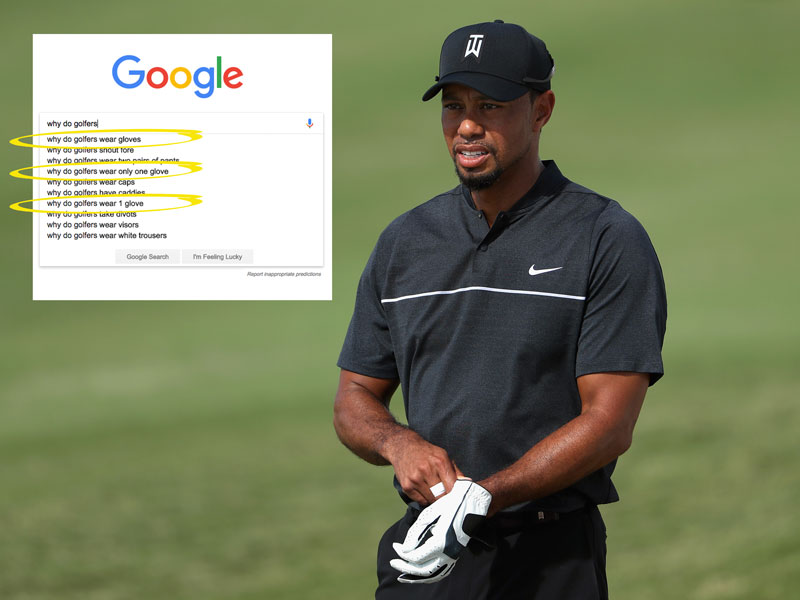 'Why Do Golfers Only Wear One Glove?' You Asked Google And We've Got The Answer...
'Why Do Golfers Only Wear One Glove?' You Asked Google And We've Got The Answer...You asked Google and we've got the answer...
By Roderick Easdale
-
 How To Regrip Golf Clubs
How To Regrip Golf ClubsKnowing how to regrip golf clubs means you can afford to replace them as and when they need replacing
By Joe Ferguson
-
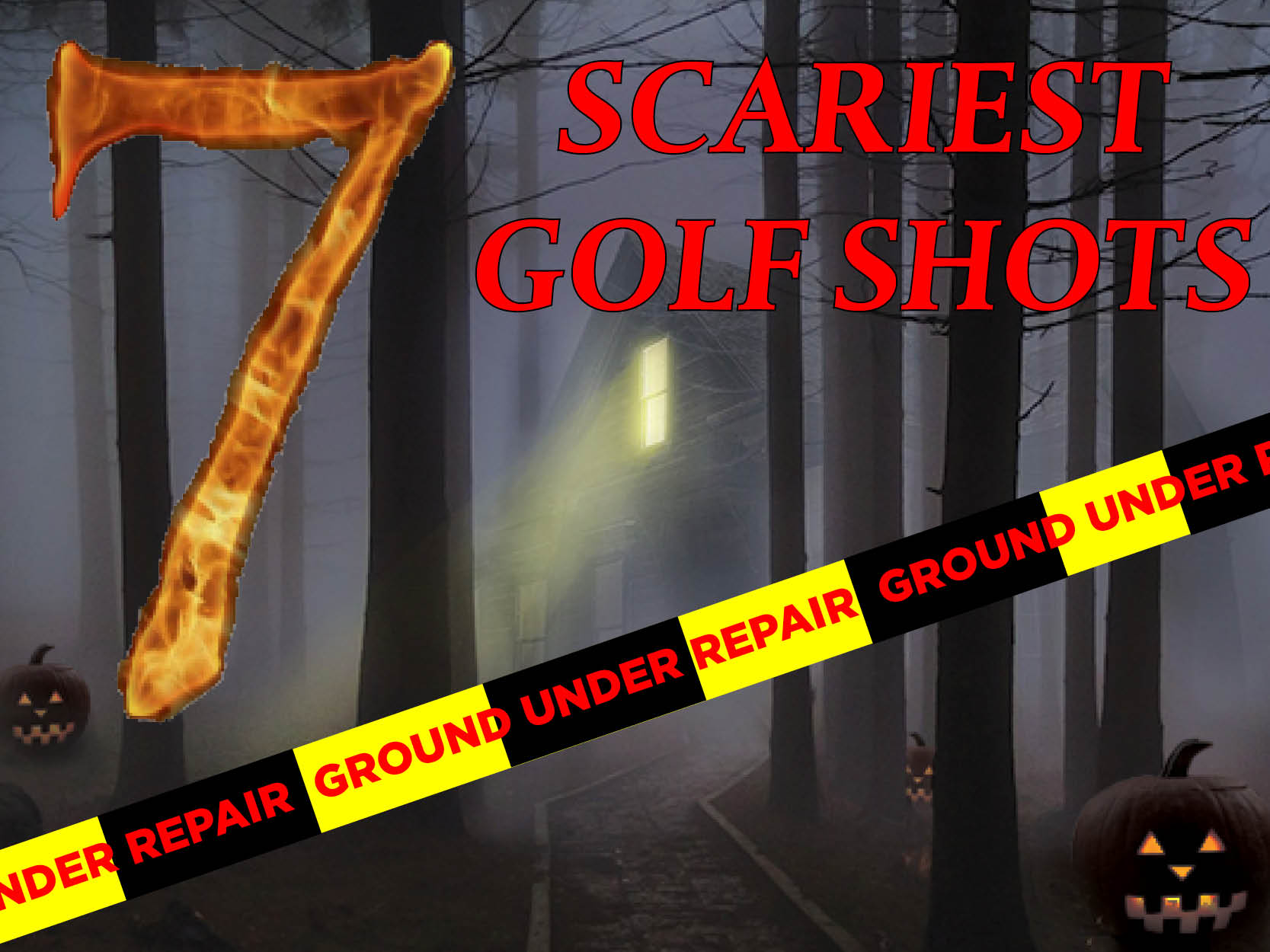 The 7 Scariest Shots in Golf
The 7 Scariest Shots in GolfWith Halloween creeping up, we have selected the 7 scariest shots in golf
By Neil Tappin
-
 17 Ways To Tell You're Obsessed With Golf
17 Ways To Tell You're Obsessed With GolfThe tell-tale signs that you are a true golf fanatic
By Roderick Easdale
-
 10 Of The Best Arnold Palmer Quotes
10 Of The Best Arnold Palmer QuotesHere we take a look at 10 of our favourite Arnold Palmer quotes
By Roderick Easdale